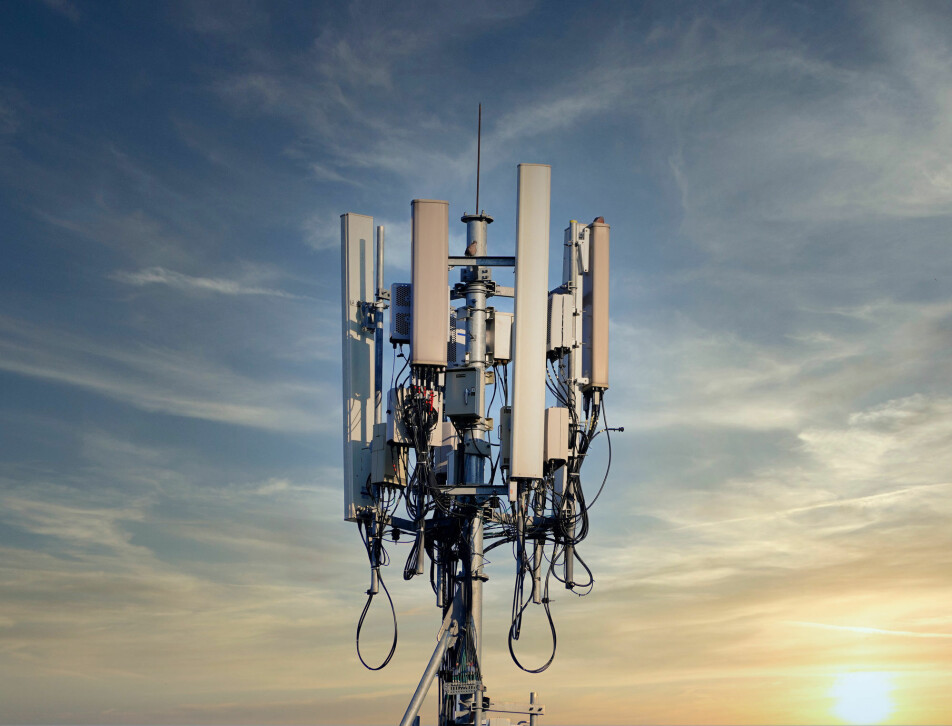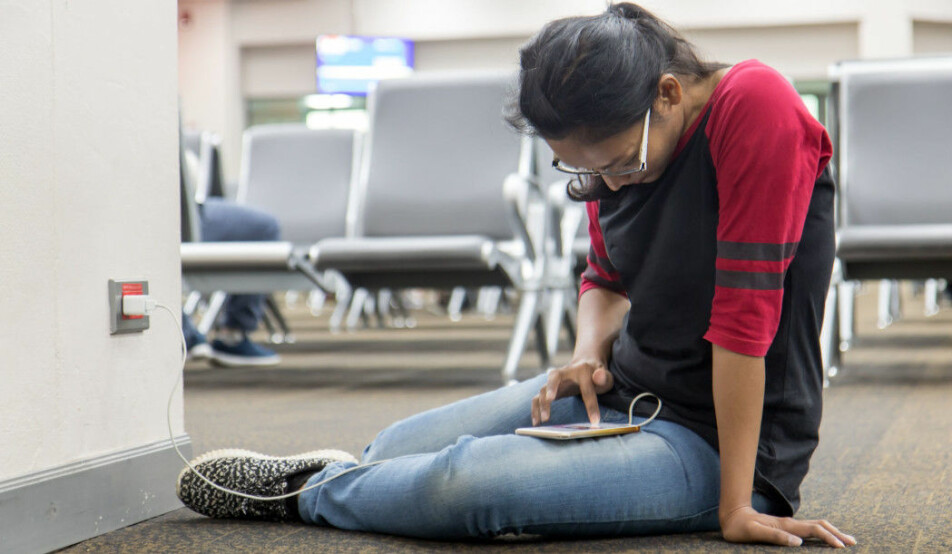
What exactly is 5G?
What frequencies will 5G use? What’s the new technology behind it? Will there be many more base stations? What follows is a deep dive into the details of the next generation mobile network coming your way soon.
A number of countries are working to build out the next generation mobile network, 5G. Telenor, Telia and Ice are responsible for the rollout of this new system in Norway.
“We have gotten off to a good start,” said Petter Aglen, the network architect responsible for mobile systems at Telenor Norway, to sciencenorway.no.
Telenor plans to complete replacing equipment at 8,500 base stations by the end of 2024. This year, the rollout is focused on large cities such as Oslo, Stavanger and Bergen.
Telia is committed to putting in place a 5G network across Norway by 2023.
The rollout of 5G has received a lot of attention across the globe. What follows is a look at what's new with this network, and the kind of technology behind it.
Several uses
5G means 5th generation mobile network. It’s not one technology, but a collection of technologies and upgrades.
The ability to go online with a mobile phone was introduced with 3G. With 4G, users got more speed.
5G promises to provide even faster networks, on par with a fibre network. In addition, operators and researchers envisage more areas of use than just on your phone.
These uses usually fall under three categories:
- Better mobile broadband
- Machine-to-machine communication, also called the Internet of Things
- Ultra-reliable communication with low delay
The Internet of Things and industrial use
Better mobile broadband means faster internet on your mobile. 5G is also said to be a good alternative to fibre networks at home, in situations where it may be difficult to lay fibre cables.
5G will also have the capacity to allow many more devices to be connected online, which should facilitate growth in what is called the Internet of Things.
There are more and more wireless gadgets in our homes, a development we also see outdoors, says Josef Noll, a professor at the Department of Technology Systems at the University of Oslo who studies mobile networks.
Sensors for traffic regulation, flood warnings, water levels in storm drains and monitoring of landslide-prone places are among the many applications that Noll says 5G can facilitate.
“5G has improved energy-saving mechanisms. Gadgets can be connected to the 5G network, but go into sleep mode and thus not use electricity,” he said.
“This started with 4G, but if you want a sensor out in the field that will last for ten years, then it needs to be very efficient, so you don’t have to change the battery all the time,” Noll said.
There may be even more smart gadgets in cities, in agriculture and other industries.
5G should also have less delay and be more reliable. It will facilitate self-driving vehicles and industrial use, where machines have to be able to send and receive information almost in real time.
Telenor’s Petter Aglen gives an example: If a robot has to pick up an egg, the delay has to be small enough so the robot can stop squeezing as soon as it senses enough pressure — otherwise the egg will break.
How fast?
5G is said to have a theoretical top speed of 20 gigabits per second (Gbit/s). This means that a feature film can be downloaded in a few seconds — in theory, anyway.
Telenor and Huawei demonstrated 5G in 2017 and managed to achieve a maximum speed of 71 Gbit/s, the Norwegian online news site DinSide reported. That’s very fast.
Real world speeds, however, will be about the maximum that we can get from 4G.
Norway can expect speeds of between 50 megabits per second and 2 gigabits in the start-up phase, according to the Norwegian Communications Authority (Nkom) (in Norwegian).
With a speed of 1 Gbit/s, you can theoretically download a Blu-ray-quality movie in two minutes, according to MyRepublic Support.
5G speeds will vary depending on where you are and how many people are on the network.
Norway’s mobile network is already very fast. In 2018, Telenor's mobile network was named the fastest in the world by the company Ookla. The average speed for Telenor's mobile networks in October last year was 79.3 Mbit /s, according to figures from Ookla.
What makes 5G faster?
To understand why 5G can be so fast, you first need to understand how information is sent wirelessly.
Wireless networks use radio waves to transmit data.
Radio waves are electromagnetic radiation with long wavelengths and low energy.
Light, UV radiation and X-rays are other, more high-frequency forms of electromagnetic radiation.
Radio waves lie at one end of the electromagnetic spectrum and have wavelengths of between 1 millimetre and 20 kilometres. A wavelength is the distance from the top of one wave to the top of the next.
Visible light, on the other hand, has much shorter wavelengths — between 380-750 nanometres.

When information is sent using radio waves, we use the word frequencies to describe the waves. Frequency is measured in hertz, and simply means the number of waves that pass one point per second.
Electromagnetic radiation travels at the speed of light. That means it’s the wavelength that determines how many waves have time to pass the point in a second. If you are sending kilometre-long waves, they have less time to pass a specific point than nanometre waves, for example.
Wireless communication relies on radio waves of a certain frequency.
These radio waves are changed or modulated. One way to think of this is that modulation means changing the shape of the wave, as described in this article on the Radio Academy website. You can modulate radio waves by varying their frequency, amplitude (the height of the wave), or something that is called the phase, or a combination of these.
Digital information is transmitted with binary computer language, 0s and 1s. The waves change so that they encode a series of 0s and 1s, which is decoded as the information you receive on your phone.
Similar to 4G
In terms of radio technology, 5G is very similar to 4G, says Telenor’s Aglen.
“But what allows us to increase capacity are technological improvements,” he said.
5G gives users room for more bits, or 0s and 1s per hertz.
But the ability to use an increased number of frequency bands is what makes the biggest difference with 5G, Aglen said.
Higher frequencies
5G will use frequencies in the microwave area that have not been used for wireless mobile networks before.
The microwave range is the most high-frequency part of the radio spectrum.
5G will use microwaves in the range of 24 gigahertz and higher. One gigahertz is equivalent to one billion waves per second.
When microwaves are being described in connection with 5G, they are also called millimetre waves, because the wavelength can be measured in millimetres.
But 5G will also use lower frequencies and medium high frequencies: 600-850 MHz and 2.5–3.7 GHz.
These are already used for 4G, except for 3.7 GHz.
“What we have with 5G is that you can use the same technology with low to very high bands. There were some limitations in that regard with 4G,” Aglen said.
Long wavelengths travel far
The use of different frequencies is strictly regulated, otherwise it would be a free-for-all. In Norway, the state agency Nkom, or the Norwegian Communications Authority, issues permits.
The new frequencies for 5G will provide more room for data traffic.
“Speed is related to how much bandwidth you have. It’s an important factor that helps determine the speeds that we can expect,” Aglen said.
This should help eliminate delays because of queuing, Aglen said.
“That’s a lot of what’s at issue here. It’s somewhat the same principle as why we build more and wider roads, to be able to handle the increased traffic,” he said.
Where the wavelengths are longer, meaning lower on the radio spectrum, the available space is narrower.
TV signals, air traffic, DAB, 4G and other services all have to have their own specific frequency bands for transmission.
The most popular frequencies have a good balance between range and capacity (bandwidth).
Signals with long wavelengths can travel far. These waves can be broadcast over mountains and valleys, and penetrate buildings.
The disadvantage is that long wavelengths have less bandwidth.
Higher frequencies have better capacity, but the disadvantage is that they also have a short range.
Frequencies from 24 GHz and upwards, which 5G will eventually use, die out faster than lower frequencies and are easily disrupted.
Works best with a clear view
Josef Noll at the Department of Technology Systems at UiO explains one of the reasons why higher radio frequencies have a poorer range.
“You can compare to a rock on a road you’re walking. If the stone is small, you won’t notice it. If you walk in the mountains, and the stone is 30 centimetres in diameter, then it will be a little more difficult to get over. When the stone is half as big as you are, or as big — then you have to climb over it,” he said.
“This is exactly how it is for radio waves. When there are small obstacles, they go through. But as the obstacles increase in size, there’s a lot of interaction between the wave and the object,” he said.
The millimetre waves that 5G will use can be disturbed by things as large as a tree, as small as a twig or even heavy rain.
The high frequencies work best when there is clear visibility from where you are to the base station.
But that’s not why these frequencies haven’t been used for mobile networks before, Noll said.
“It’s really mostly that the technology to use higher frequencies needs more computing power and better processing,” he said.

Will there be many more base stations?
The lower bands will provide good range.
High frequencies are not a part of the ongoing 5G rollout in Norway. But these are the frequencies that can provide the fastest speeds. However, coverage that relies on the highest frequencies requires many small base stations.
“Yes, we need to build more base stations,” says Noll.
The antennas will transmit a weak signal, and cover a smaller area. They can be placed around a football stadium, or on lampposts, for example.
“You have to increase the number of antennas,” says Thomas Zinner, an associate professor at the Department of Information Security and Communication Technology at the Norwegian University of Science and Technology, NTNU.
These may not be appropriate everywhere.
“In rural areas, it may not make sense, because you have a reduced number of users, while in urban areas it will be necessary to cover a large number of users in a smaller area. Developing coverage will also be easier because we can put them on rooftops, for example,” Zinner said.
The base stations are smaller when the frequency is higher.
“Typically in lower bands, the antenna is larger, and in higher bands, the antennas are significantly smaller. You can put the antennas closer together when you are using higher frequencies,” Aglen from Telenor says.
The higher frequencies have not been auctioned off in Norway yet. The band 24.2 to 27.5 GHz is being considered for potential auction later.
Norwegian mobile operators have so far secured bands in the area of 700 MHz, and have licenses in 3GHz for the 5 G rollout.
The 2.6 GHz and 3.6 GHz bands will be allocated in 2021.
“What we are doing now is a fairly massive modernization of 4G as well, in order to be able to use more efficient antennas,” Aglen said.
“We’re operating and testing technology with 5G on millimetre bands, but this won’t be part of the ongoing rollout. Instead, we’re reusing existing installations,” he said.
Different technologies contribute to speed
Another thing that will make 5G faster is upgraded antennas.
MIMO stands for multiple input multiple output.
This means that there are several small antennas in an antenna set that can talk to the mobile at the same time.
Some of today's best mobiles can have four active connections to a base station. 5G phones will have the option of having more.
5G will need massive MIMO, which means even more antennas in one antenna, and thus more capacity.
“Massive MIMO is nothing new, in a way. It’s a technology that has been around for a long time. But it’s only now that you see it being implemented on a large scale in mobile networks around the world,” says Aglen.
In order to prevent interference between the signals, the companies are rolling out a technology called beamforming. The signals are adjusted so that they are pointed in the direction of the users. This means that the signals reach the right place more efficiently, and don’t have to be sent in all directions.

Less delay
5G should also have less delay. Delay is how long a data packet takes on its journey. For example, fibre networks allow for quicker data transfers than copper wires.
The delay with 4G is normally between 30-50 milliseconds, according to the Norwegian Board of Technology.
According to the plan, 5G will have a delay that is less than 10 milliseconds under normal conditions, and down to less than 1 millisecond for special applications.
A shorter delay has implications for online gaming, remote control of machines, self-driving vehicles and will allow for AR (augmented reality). AR is a technology where you see through glasses or car windshields just as you do now, but where digital information is also visible.
An important change to ensure shorter delays is a principle called edge computing, says Katina Kralevska, an associate professor at the Department of Information Security and Communication Technology at NTNU.
“You want to bring the processing closer to the users, so that we don’t have to send data far away,” she said.
Telenor says that instead of computer operations being performed on a server far away, they can instead be moved to "virtualized servers" in the 5G network.
That would mean two self-driving cars in Trondheim could talk to each other via the local 5G structure without having to go via a server in eastern Norway, as one example.
Boxes are replaced with software
NTNU researchers Katina Kralevska and Thomas Zinner say that an important distinction between 4G and 5G is what they call softwareification of the network. Software is software, and hardware is the physical components.

“We are moving away from dedicated boxes and towards cloud-based architecture. This is also happening in telecommunications and 5G,” Zinner said. “This will enable more flexible use of the infrastructure.”
Kralevska compares it to downloading an app to your phone. Instead of buying your own timer, radio and calendar, you can have everything on your mobile.
“Your phone is the hardware, and you can install applications and use them for various things. We want to do something like this with networking,” she says.
Zinner says the thing most people notice when they see an outside base station is usually the antenna.
“But there’s also hardware and software behind the antenna that is hidden from us and that takes care of the entire operation,” he said.
The problem is that the boxes can break, or have to be replaced, which requires someone to go there and do it.
“It takes a long time to update a system like this and roll out new technology. We want to move away from this situation, and softwareization is an important prerequisite for doing so,” says Zinner.
According to a previous article from OsloMet published on forskning.no (in Norwegian), only the antenna at the base station will be needed, while the rest will be software at a data centre.

Networks for different uses
With 5G, it will also be possible to divide the network by what is called disk sharing.
The network service can be specially adapted to a company or organization that needs very low delay or extra security, according to Telia.
It will also be possible to place emergency networks in separate "disks" of the 5G network.
Telenor uses the motorway as an analogy: You can widen the motorway by designating specific lanes for different traffic. The traffic in their separate lanes can travel unhindered by all other traffic.
“5G will take into account the need different applications have for different requirements in terms of delay, bandwidth and reliability,” says Zinner.
“If I want to watch a video, I am most interested in bandwidth to have the best possible quality. I may not care if I have to wait a few seconds before it starts. The Internet of Things has many objects, but they only send data from time to time, which is a completely different behaviour than people who use the internet,” he said.
In the beginning, 5G will use the same core network as 4G. This approach to expanding a network is called 5G Non Stand Alone, according to Teknisk Ukeblad, a Norwegian science and technology magazine. Disk sharing is only possible after 5G can use its own core network.
The core network is like a factory that receives, processes and sends out all the data, Teknisk Ukeblad explains (in Norwegian).
Free access to information
Josef Noll at UiO would like to see 5G introduce a model where everyone can access information online — even if they do not subscribe.
“In this case, people should only have access to the text and images. If you want more than text and images, then you can pay for mobile broadband. It would be easy to build this into a 5G network. I believe it is absolutely necessary in a digital society that everyone have free access to information,” he said.
Apart from that, he sees several positive aspects with the rollout of 5G.
“We have seen the need from 2G to 3G to 4G. I see many extremely useful scenarios for 5G where both reliability and security are of interest,” Noll said.
Translated by: Nancy Bazilchuk
Read the Norwegian version of this article on forskning.no
































